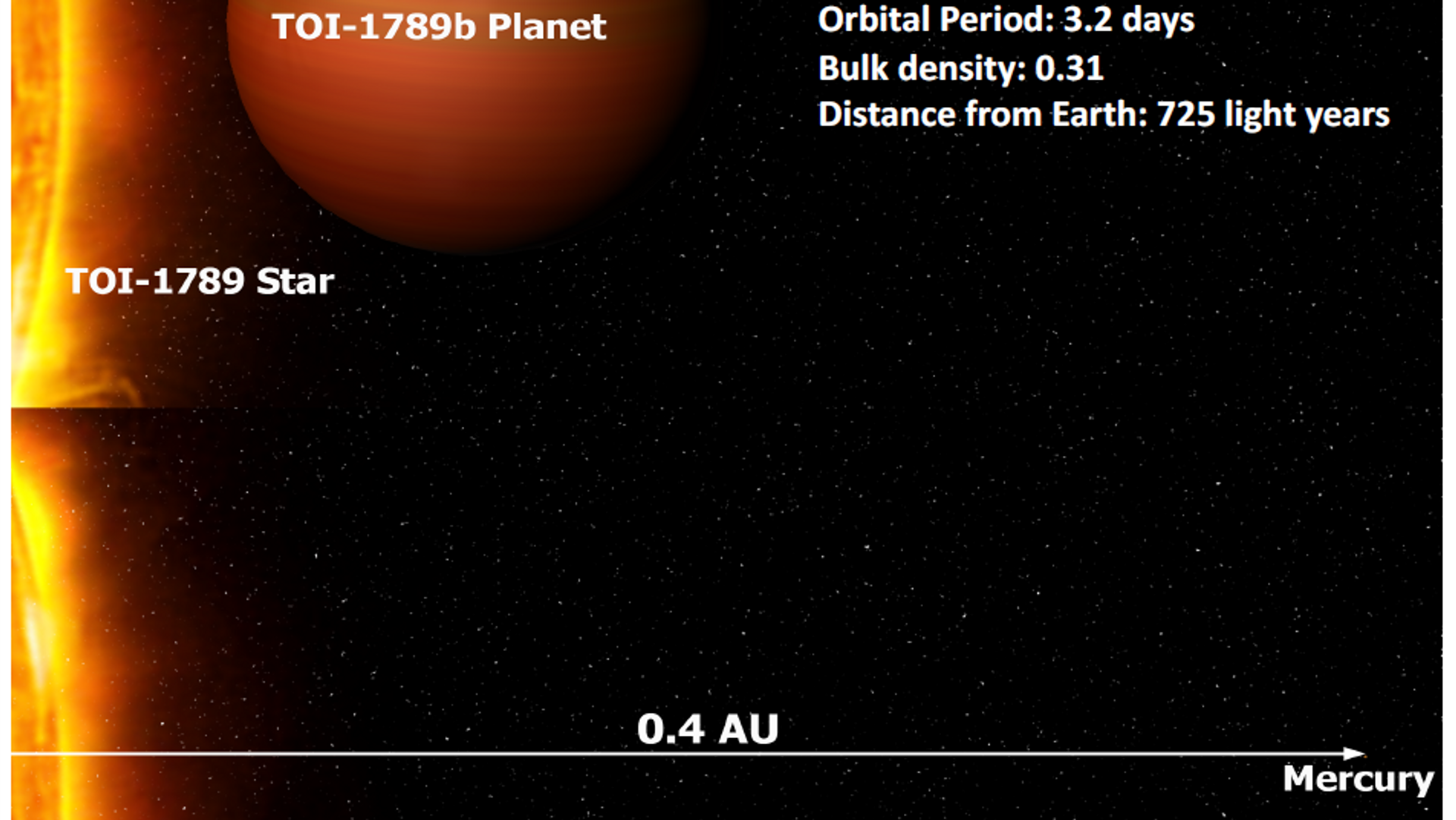https://sputnikglobe.com/20211117/indian-space-research-agency-discovers-inflated-hot-jupiter-around-a-sub-giant-star-1090802522.html
Indian Space Research Agency Discovers Inflated Hot-Jupiter Around a Sub-Giant Star
Indian Space Research Agency Discovers Inflated Hot-Jupiter Around a Sub-Giant Star
Sputnik International
This newly discovered star-planet system is unique because the planet orbits the host star every 3.2 days. Scientists have found less than 10 such close-in... 17.11.2021, Sputnik International
2021-11-17T14:02+0000
2021-11-17T14:02+0000
2022-11-30T10:02+0000
solar system
india's mars orbiter spacecraft (isro)
indian space research organization (isro)
exoplanet
jupiter
sun
https://cdn1.img.sputnikglobe.com/img/07e5/0b/11/1090802402_0:229:952:765_1920x0_80_0_0_bee92a4a8093506a57027cedffc8ba99.png
A new exoplanet with a mass 1.5 times that of the Sun has been discovered by scientists at the Ahmedabad-based ISRO’s Physical Research Laboratory (PRL). The Discovery team, led by Professor Abhijit Chakraborty, has found that the planet, located 725 light-years away, orbits the host star in just 3.2 days. Therefore, it is only roughly one-tenth the distance between Sun and Mercury to its host star.Since this extrasolar planet has masses between 0.25 to a few Jupiter mass and is located at less than 0.1 Astronomical Unit, it falls under a category known as “Hot Jupiters.”Scientists have claimed that detecting this planet-- known as TOI 1789b or HD 82139b as per the IAU nomenclature—will enhance the understanding of various mechanisms responsible for inflation in hot Jupiters. It will also help in the study of planetary systems around evolving and ageing stars. This is the second exoplanet discovered by this lab using a PRL Advanced Radial-velocity Abu-sky Search (PARAS) optical fiber-fed spectrograph, the first of its kind in India, at the 1.2 m Mt. Abu telescope.
jupiter
Sputnik International
feedback@sputniknews.com
+74956456601
MIA „Rossiya Segodnya“
2021
Rishikesh Kumar
https://cdn1.img.sputnikglobe.com/img/07e4/08/04/1080055820_0:0:388:389_100x100_80_0_0_40018ee210946d65d49ffba4f4c008e1.jpg
Rishikesh Kumar
https://cdn1.img.sputnikglobe.com/img/07e4/08/04/1080055820_0:0:388:389_100x100_80_0_0_40018ee210946d65d49ffba4f4c008e1.jpg
News
en_EN
Sputnik International
feedback@sputniknews.com
+74956456601
MIA „Rossiya Segodnya“
Sputnik International
feedback@sputniknews.com
+74956456601
MIA „Rossiya Segodnya“
Rishikesh Kumar
https://cdn1.img.sputnikglobe.com/img/07e4/08/04/1080055820_0:0:388:389_100x100_80_0_0_40018ee210946d65d49ffba4f4c008e1.jpg
solar system, india's mars orbiter spacecraft (isro), indian space research organization (isro), exoplanet, jupiter, sun
solar system, india's mars orbiter spacecraft (isro), indian space research organization (isro), exoplanet, jupiter, sun
Indian Space Research Agency Discovers Inflated Hot-Jupiter Around a Sub-Giant Star
14:02 GMT 17.11.2021 (Updated: 10:02 GMT 30.11.2022) This newly discovered star-planet system is unique because the planet orbits the host star every 3.2 days. Scientists have found less than 10 such close-in systems among the multitude of exoplanets discovered over the past several decades.
A new exoplanet with a mass 1.5 times that of the Sun has been discovered by scientists at the Ahmedabad-based ISRO’s Physical Research Laboratory (PRL). The Discovery team, led by Professor Abhijit Chakraborty, has found that the planet, located 725 light-years away,
orbits the host star in just 3.2 days. Therefore, it is only roughly one-tenth the distance between Sun and Mercury to its host star.
“Because of the close proximity of the planet to its host star, it is extremely heated with a surface temperature reaching up to 2000 K, and hence an inflated radius, making it one of the lowest-density planets known (density of 0.31 gram per cc),” a press statement issued by the Indian Space Research Organisation (ISRO) read on Wednesday.
Since this extrasolar planet has masses between 0.25 to a few Jupiter mass and is located at less than 0.1 Astronomical Unit, it falls under a category known as
“Hot Jupiters.”Scientists have claimed that detecting this planet-- known as TOI 1789b or HD 82139b as per the IAU nomenclature—will enhance the understanding of various mechanisms responsible for inflation in hot Jupiters. It will also help in the study of planetary systems around evolving and ageing stars.
This is the second exoplanet discovered by this lab using a PRL Advanced Radial-velocity Abu-sky Search (PARAS) optical fiber-fed spectrograph, the first of its kind in India, at the 1.2 m Mt. Abu telescope.


